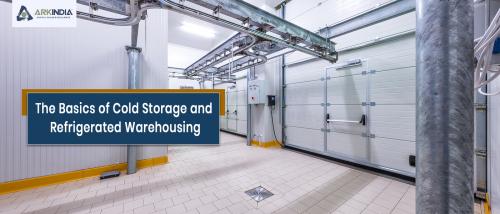
The shipping network has expanded by many folds in recent years as it is a reliable and efficient way to transport goods across continents. These goods include anything and everything, including perishable items like food and medicines that travel across the world. The tricky part about such perishable goods is that they have to be taken special care of. This is simply because if they do not reach on time, they risk expiry, and at the very least, loss of quality. And it’s not about just time, for them to be transported without damage, special measures need to be taken that ensure a safe environment and passage for such goods. This is where cold chain logistics come into play.
Technology allows for proper arrangements to be made for such transit. Nowadays, state-of-the-art temperature-controlled containers allow for transportation of such food and medicine to places of need and trade. It not only helps the global economy but makes the world come closer together. But when we talk about refrigerated transportation, we must also talk about the two pillars that make cold chain logistics possible; cold storage and refrigerated warehousing. Let’s learn some of the basics of this marvel of technological advancement.
1. Suspended Ceilings
In temperature-controlled environments, the build-up of ice and water droplets is inevitable. This happens to be the case for all cold storage. The ceilings have collections of condensed water on them in such varying environmental conditions, which can precipitate on the floor and make a mess. This is why cold storage warehouses need to employ architectural practices like drop ceilings which should be placed over drainage areas to safely dispose of these water droplets. One thing you must ensure is that these suspended ceilings are well supported for their weight.
2. Ventilation
For similar reasons as the point above, ventilation is another important feature of a cold storage warehouse. To avoid the formation of snow, ice, and water puddles, proper ventilation is a must. Cold storages usually have evaporators that control the flow of air inside the warehouse. Evaporators remove the pockets of high-temperature air that can make the insides of a warehouse stuffy. Another thing to adopt is rapid roller doors for the benefit of both employees and the goods. These doors keep the temperature difference between outside and inside consistent.
3. Proper Refrigeration
Refrigeration is the heart of a successful cold storage warehouse. They are responsible for creating the cold temperatures necessary for the storage of perishable items. The two common types of cold storage include vapour compression and vapour absorption. The vapour compression method is more common than vapour absorption. The key difference between the two types of refrigerators is the energy consumed. A vapour compression system requires a high-grade energy system like electrical or mechanical. In contrast, a vapour absorption system can work on low-grade sources like exhaust, steam, or even solar.
4. Humidity Control
When talking about perishable items, food is the most common item shipped and stored across the globe. Food items undergo chemical changes fairly easily as they are susceptible to rot and spoilage if not kept in suitable environments. Humidity in a warehouse can create suitable conditions for bacteria like E. coli and salmonella to grow and spoil food items. The ideal practice is to install dehumidifiers in the warehouse to reduce environmental humidity inside the facility.
5. Ample Storage Space
With refrigerators, humidifiers, and improvised indoor space for accommodating everything required to run a cold storage warehouse efficiently, you will need an ample amount of space to run your operations smoothly. Apart from these elements, there also needs to be room for people to stand, carts to move around, and all of this needs to be planned well in advance to avoid pockets of high traffic. These high traffic pockets can cause very damaging accidents..